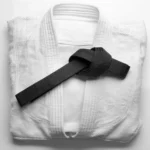BJJ, or Brazilian Jiu-Jitsu, is a martial art that has been gaining popularity all over the world in recent years. It is a grappling-based martial art that focuses on ground fighting and submission holds. In this blog post, we will discuss the basics of BJJ and explain the rules, weight classes, and basic moves and submissions that are involved in this martial art.
The Background
BJJ is a martial art that was developed in Brazil in the early 1900s. It was developed in Brazil in the early 20th century by Brazilian jiu-jitsu founder Helio Gracie. BJJ promotes the concept that a smaller, weaker person can successfully defend against a bigger, stronger assailant by using proper technique, leverage, and body positioning.
Today, BJJ is practiced worldwide and a staple of many mixed martial arts (MMA) competitions. It is also popular in self-defense courses and as a fitness regimen. BJJ is considered to be one of the most effective martial arts for self-defense, as it focuses on grappling and ground fighting.
Click here to learn more about the history of Brazilian Jiu Jitsu.
Gi vs. No-Gi Jiu Jitsu
In Brazilian Jiu-Jitsu, there are two main types of training: Gi and No-Gi. Both have their own benefits and drawbacks, so it’s important to understand the difference between the two before deciding which one is right for you.
Gi training focuses on the use of the uniform (or “gi”) to control your opponent. This type of training is often seen as more traditional, and it can be very effective in self-defense situations. However, it can also be slower-paced and require more strength and technique than No-Gi training.
On the other hand, No-Gi training does not rely on using a uniform. This type of training is often seen as more modern and athletic and can be fast-paced. However, it may not be as effective in self-defense situations since you won’t have the same level of control over your opponent.
Official BJJ Weight Classes
IBJJF Gi Weight Classes
| Weight divisions | Adults/Masters Gi – male | Juvenile Gi – male | Adults/Masters Gi – female | Juvenile Gi – female |
| Rooster | 57.5 kg (126.8 lb) | 53.50 kg (117.9 lb) | 48.5 kg (106.9 lb) | 44.30 kg (97.7 lb) |
| Light Feather | 64 kg (141.1 lb) | 58.50 kg (129.0 lb) | 53.5 kg (117.9 lb) | 48.30 kg (106.5 lb) |
| Feather | 70 kg (154.3 lb) | 64 kg (141.1 lb) | 58.5 kg (129.0 lb) | 52.50 kg (115.7 lb) |
| Light | 76 kg (167.6 lb) | 69 kg (152.1 lb) | 64 kg (141.1 lb) | 56.50 kg (124.6 lb) |
| Middle | 82.3 kg (181.4 lb) | 74 kg (163.1 lb) | 69 kg (152.1 lb) | 60.50 kg (133.4 lb) |
| Medium-Heavy | 88.3 kg (194.7 lb) | 79.30 kg (174.8 lb) | 74 kg (163.1 lb) | 65 kg (143.3 lb) |
| Heavy | 94.3 kg (207.9 lb) | 84.30 kg (185.8 lb) | 79.3 kg (174.8 lb) | 69 kg (152.1 lb) |
| Super Heavy | 100.5 kg (221.6 lb) | 89.30 kg (196.9 lb) | No weight limit | No weight limit |
| Ultra-Heavy | No weight limit | No weight limit | n/a | n/a |
| Open Class | open to all weight divisions | depends on tournament rules | open to all weight divisions | depends on tournament rules |
IBJJF No-Gi Weight Classes
| Weight divisions | Adults/Masters No-Gi – male | Juvenile No Gi – male | Adults/Masters No-Gi – female | Juvenile No Gi – female |
| Rooster | 55.5 kg (122.4 lb) | 51.50 kg (113.5 lb) | 46.5 kg (102.5 lb) | 42.50 kg (93.7 lb) |
| Light Feather | 61.5 kg (135.6 lb) | 56.50 kg (124.6 lb) | 51.5 kg (113.5 lb) | 46.50 kg (102.5 lb) |
| Feather | 67.5 kg (148.8 lb) | 61.50 kg (135.6 lb) | 56.5 kg (124.6 lb) | 50.50 kg (111.3 lb) |
| Light | 73.5 kg (162.0 lb) | 66.50 kg (146.6 lb) | 61.5 kg (135.6 lb) | 54.50 kg (120.2 lb) |
| Middle | 79.5 kg (175.3 lb) | 71.50 kg (157.6 lb) | 66.5 kg (146.6 lb) | 58.50 kg (129.0 lb) |
| Medium Heavy | 85.5 kg (188.5 lb) | 76.50 kg (168.7 lb) | 71.5 kg (157.6 lb) | 62.50 kg (137.8 lb) |
| Heavy | 91.5 kg (201.7 lb) | 81.50 kg (179.7 lb) | 76.5 kg (168.7 lb) | 66.50 kg (146.6 lb) |
| Super Heavy | 97.5 kg (215.0 lb) | 86.50 kg (190.7 lb) | No weight limit | No weight limit |
| Ultra-Heavy | No weight limit | No weight limit | n/a | n/a |
| Open Class | open to all weight divisions | depends on tournament rules | open to all weight divisions | depends on tournament rules |
The Basic Rules of Jiu Jitsu
There are two main ways to win in BJJ: by submission or points. A submission is when you force your opponent to tap out or submit by using a chokehold or joint lock. Points are awarded for taking down your opponent, controlling your opponent on the ground, and advancing your position. The match ends when one fighter has either won by submission or has amassed the most points.
It is important to note that many moves won’t be available to the lower belts since the moves are deemed too dangerous for beginners. For example, most leglocks and wristlocks will be restricted in a match.
BJJ Points System
Under IBJJF rules, you can get 2, 3, and 3 points. Two points are for taking someone down, sweeping someone, or getting to the knee on the belly position. You can get three points only when you pass someone’s guard completely and four points when you acquire the back mount or mount position. In order to receive the points for the acquired position, you will have to hold that position for at least three seconds.
You can also receive negative points, for example, for stalling long enough or for penalties such as illegal moves.
You also cannot leave the matt area, you cannot talk to the judge during the match, you cannot slam your opponent onto the ground, you cannot stall, and many other things you will have to be careful of since the IBJJF rules book is quite a big one.
Basic Moves of BJJ
Some of the basic moves and submissions that you will learn in BJJ include takedowns, guard passes, chokes, and joint locks. Takedowns are when you take your opponent down to the ground. Guard passes are when you pass your opponent’s guard and gain control of them on the ground. Chokes are when you cut off your opponent’s air supply by using your arms or legs to choke them. Joint locks are when you hyperextend or dislocate your opponent’s joints in order to force them to tap out.
There are many different types of submissions that can be used in Brazilian Jiu-Jitsu (BJJ). In this article, we will focus on some of the most basic submissions that every BJJ practitioner should know.
Armbar
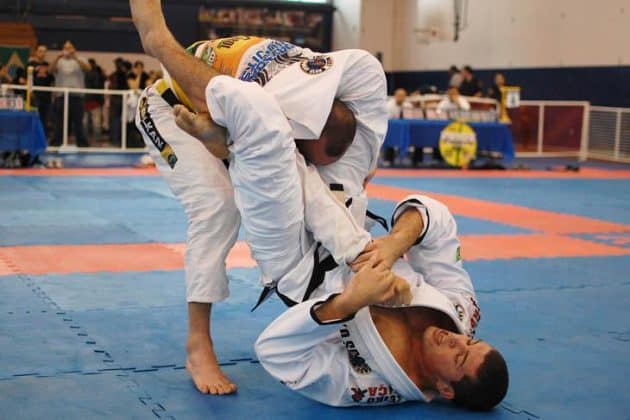
The armbar is one of the most fundamental submissions in BJJ. It is a submission that can be applied from almost any position, making it a very versatile tool. The armbar works by hyperextending the elbow, causing joint damage, and ultimately forcing the opponent to tap out.
To execute an armbar, you will need to establish a good grip on your opponent’s arm. Once you have a strong grip, you will need to sweep your legs over their head, trapping their arm between your thighs. From this position, you can apply pressure to the elbow, hyperextending it and causing pain by pushing your hips forward into their elbow while gripping onto their fist. Once your opponent taps out, you can release the pressure and let go of the submission.
Kimura
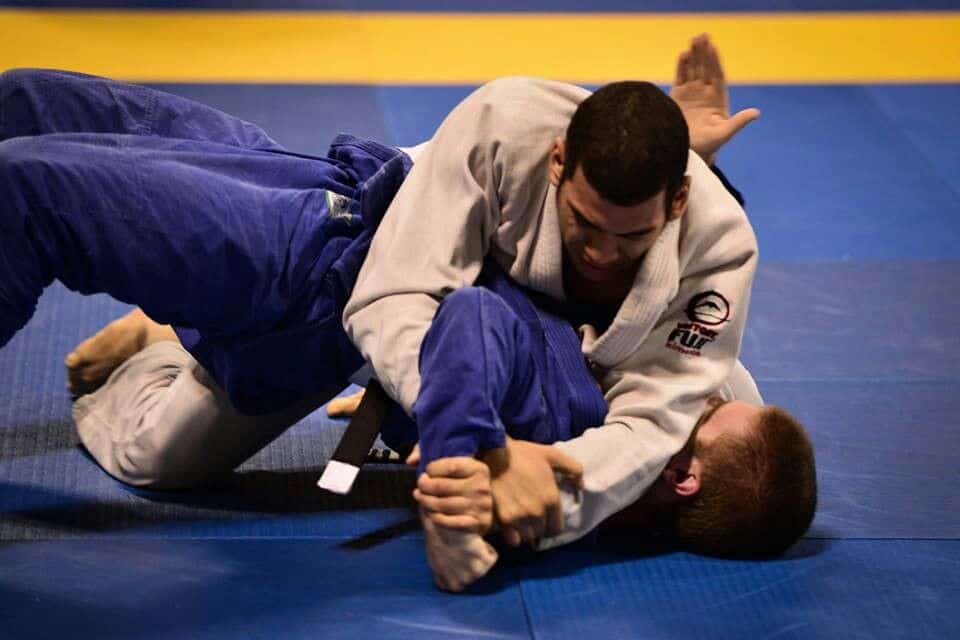
The kimura is another fundamental submission that every BJJ practitioner should know. It is similar to the armbar in that it works by hyperextending the elbow, but it is applied from a different position. The kimura can be applied from the guard, side control, or mount.
To execute a kimura, you will need to establish a good grip on your opponent’s arm. Once you have a strong grip, you will twist their arm in an unnatural way in order to put pressure on the elbow. Once your opponent taps out, you can release the pressure and let go of the submission.
Chokeholds
Chokeholds are another common type of submission in BJJ. There are many different chokeholds that can be used, but the most common is the rear-naked choke and the guillotine choke. Chokeholds work by cutting off the blood supply to the brain, causing the opponent to pass out.]
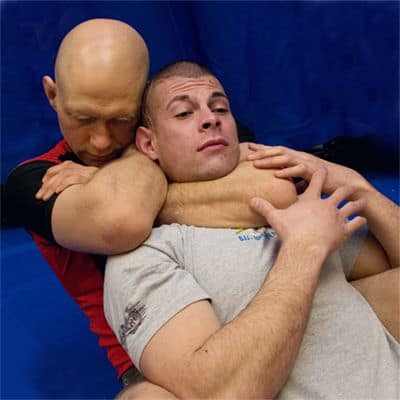
To execute a rear-naked choke, you will need to mount the back of your opponent. Once you have a strong back mount, you will need to put one of your arms under your opponent’s chin while using the other arm as leverage. From there on, you will put the fist of the arm that is under your opponent’s chin into the elbow pit of your other arm, and you will slowly start to bring your elbows together, which will cause your opponent to become uncomfortable and in pain. From this position, you are applying pressure to the neck, cutting off the blood supply to the brain. Once your opponent taps out or passes out (do not hold for so long if not in a competition), you can release the pressure and let go of the submission.
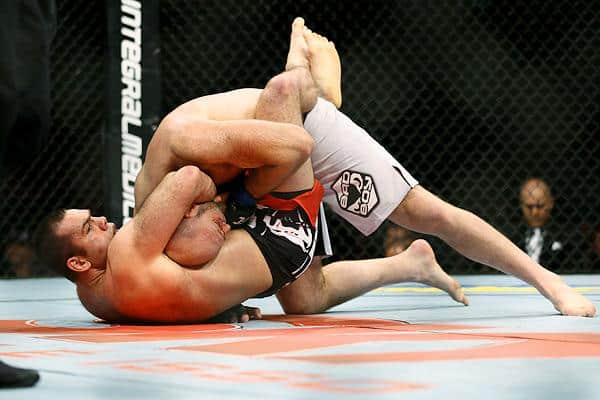
To execute a guillotine choke, you will need to establish a similar position onto your opponent’s neck, but this time without being in the back mount position. You will have to face your opponent, and once your opponent pushes their head near your armpit, you can grab hold of their neck (in the same way you would have for the rear-naked choke).
From this position, you can apply pressure to the neck, cutting off the blood supply to the brain. Once your opponent taps out, you can release the pressure and let go of the submission. This submission can be made while having the mount position, standing up, or you can even be the one who is mounted and still trap your opponent’s head in the guillotine.
These are just a few of the most basic submissions that every BJJ practitioner should know. You can get a more detailed look at submissions in our article here.
Conclusion
BJJ is a great martial art for anyone who wants to learn self-defense or compete in grappling tournaments. It is important to remember that BJJ is a grappling-based martial art, so it is important to learn the proper techniques before trying to spar with someone. If you are interested in learning more about BJJ, be sure to check out our other blog posts or come into our academy and take a class! Our certified instructors would be more than happy to help you get started on your BJJ journey.







